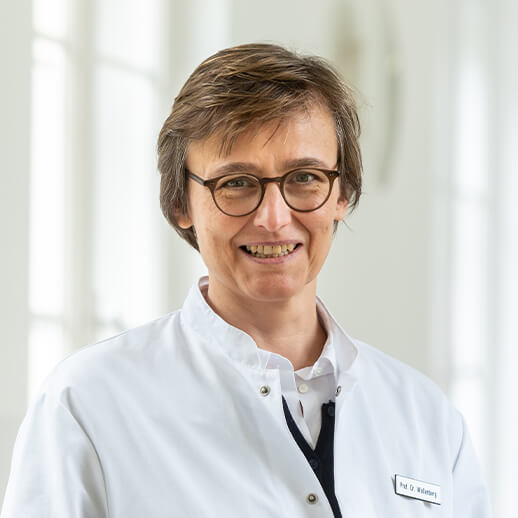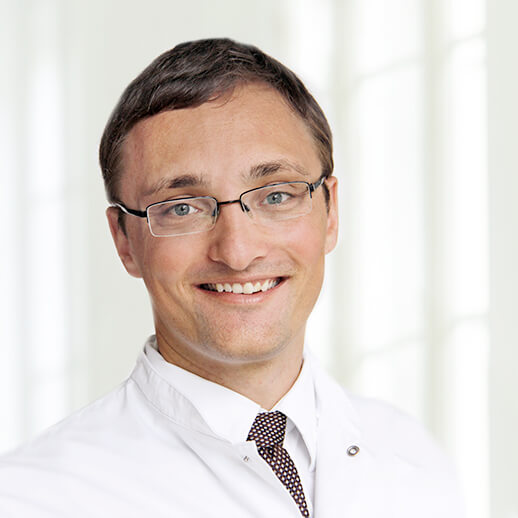Oral cavity, throat & larynx
The most common cancer of the head and neck area is squamous cell carcinoma. These occur mainly in the oral cavity, followed by the throat and larynx. These tumors usually arise from tobacco and alcohol consumption or an infection with high-risk subtypes of the human papilloma virus (HPV). HPV-associated tumors predominantly affect the back of the oral cavity and the throat (oropharynx) and have a significantly better prognosis compared to noxa-associated tumors. Depending on the location, the tumors lead to different symptoms. In tumors of the larynx, a change in the voice often occurs as an early symptom. In hoarseness, that lasts more than four weeks, an examination of the larynx should be performed. If it is located in the throat, there may be a lumpy sensation, difficulty swallowing, or pain spreading into the ear. HPV-associated tumors in particular can manifest themselves as painful, persistent swelling of the cervical lymph nodes.
Therapeutic concepts are discussed in an interdisciplinary conference for head and neck cancer diseases and adapted to the individual circumstances of the disease. The conference takes place every Tuesday from 2.30 p.m. We cover the complete spectrum in the surgical therapy of head and neck tumors:
- Minimally invasive, laser-assisted and open, organ-preserving larynx removal
- Complete laryngectomy (laryngectomy)
- Removal of tumors through the oral cavity (transoral)
- Tumor removal through an opening of the throat (median and lateral pharyngotomies)
- Laser surgery
- Radio frequency surgery
- Organ-preserving robotic surgery
- Combined concepts with other specialist departments of the hospital
In addition to safe tumor removal, the main focus is on maintaining or restoring the functions of the upper respiratory and food tract. In advanced tumors, the use of reconstructive surgery ensures the removal of the tumor, which is necessary for survival, with a minimization of functional impairment:
- Local defect coverage
- Locoregional pedicled flaps (deltopectoral flaps, frontal flaps, temporoparietal flaps, infrahyoidal muscle fascia flaps, latissimus dorsi flaps, pectoralis major flaps, platysmal flaps, supraclavicular flaps
- Microvascular free grafts (forearm graft, thigh graft, latissimus dorsi graft, scapular and parascapular graft)
After a successful tumor operation, depending on the stage of the tumor, supportive radiation and chemoradiation concepts as well as novel drug therapies are available in our tumor center.









